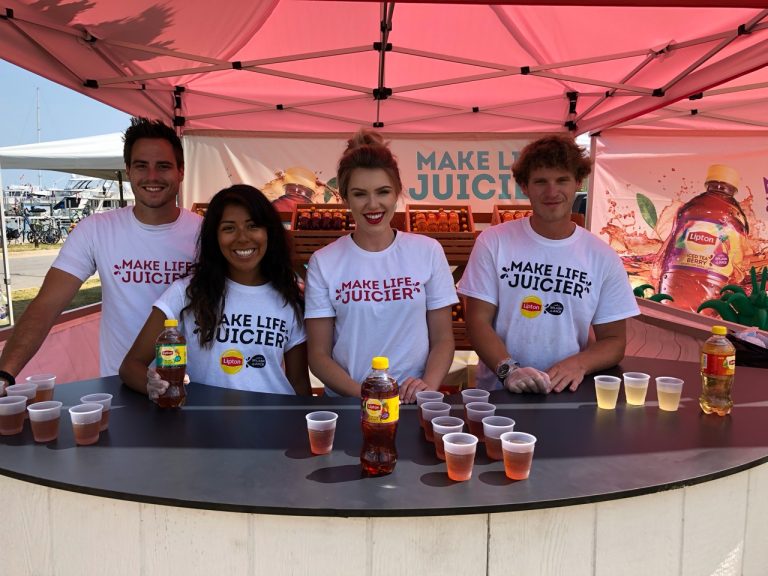08.08.18
By Lisa Major

According to EventTrack’s 2015 Consumer Survey Report, 80% of consumers said they were more likely purchase a product after trying the product at an event. That’s a staggering statistic to think about, hence the reason product sampling events are one of experiential marketing’s most tried and true campaign strategies. But what is it that makes them so effective? For one, who doesn’t love a free product sample? Number two, it can work for just about any industry out there. Three, it is relatively cost-effective when you think about the ROI it will bring. Getting your product directly in the hands of consumers through a sampling event is a surefire way to increase not only brand awareness but also sales.
The first step to any sampling campaign is to know who you are targeting. Who they are, where they are, and what they like. When you do this, you’re more apt to connect with the consumers that matter the most. And, those consumers will be the ones who are most likely to accept your product sample and potentially make a purchase.
Be especially mindful of timing when planning a sampling event and think about the product you are offering and where it best fits into your target consumer’s day and into their schedule. For example, if you have a street team distributing granola bars, target commuters in the morning hours when they are on their way to work.
The presentation of your product is everything. Present your offerings in visually appealing ways and packaging. You will also want to incorporate branded elements into your sampling event, whether it be branded tents and signs, or branded bags for street team staff. Additionally, your sampling staff will need to keep areas tidy and clean, and free of clutter.
Your product sampling staff holds the key to making connections with consumers and turning them into customers. When you are planning your campaign, think about the demographics of your consumers and who will relate best to them. Secondly, you will want to make sure that your staff is outgoing, professional, articulate, and dependable. And finally, your sampling team needs to be knowledgeable about your product and your brand. Provide the team with training materials that outline the activation itself, product specifications, and talking points to ensure that they are fully prepared for the event.
While interactions between your event staff and consumers will typically be short and sweet, you do need to have a few key talking points for the sampling staff to convey. In addition to talking points, your staff should be able to answer basic questions about your company and the products that you offer.
On top of trying your product for free, give consumers an incentive to buy your product. For example, offer a high-value discount offer or coupon. If a consumer tries your product and likes it, a discount offer will seal the deal and most likely lead to a purchase.
Post-event reporting is incredibly important to learn how consumers perceive your brand, your product, and the activation itself. Have your product sampling staff take note on consumer feedback and report back after the event.
Product sampling events can be measured in a variety of ways. A few examples include the number of samples distributed, the number of consumer impressions, or the number of visits your website received during or right after the event. Create KPIs and set goals for your campaign. This will provide you with valuable information about the event and will help you to improve future events.
Product sampling events offer companies the opportunity to introduce new products, increase brand awareness, gain valuable feedback, and increase sales. However, having the right team of brand ambassadors who are outgoing and knowledgeable is essential to a successful product sampling. ATN has helped companies of all sizes and from all industries with their product sampling campaigns. Contact us today to learn how we can help you take your product to the next level.